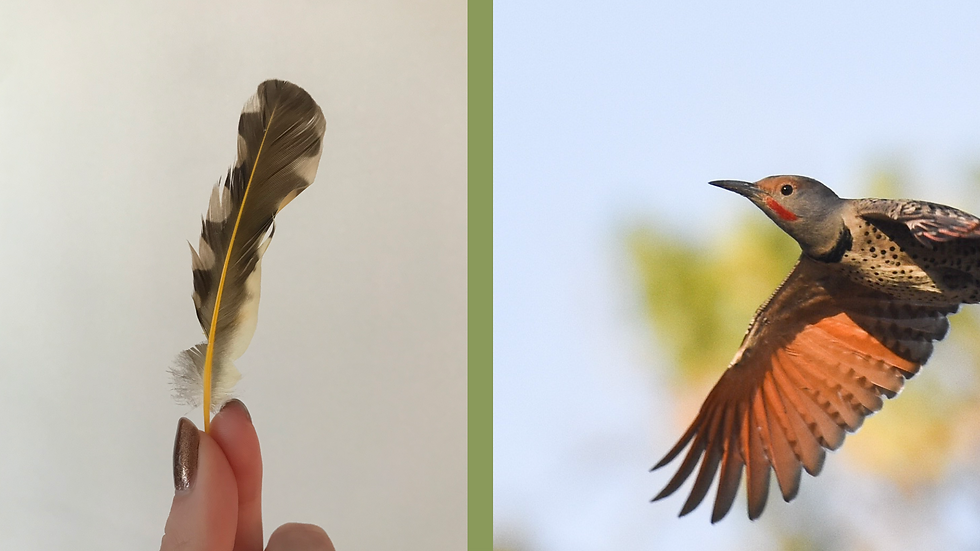Northern Flicker
- Anne Longman
- May 12
- 2 min read
Week of 05.12.25
What's black, white, and red all over (or just on its head?) The Northern flicker! These birds are the most widely dispersed member of the woodpecker family in the United States. They behave as most woodpeckers do - loudly announcing their presence, drumming on objects to mark their territory, and eating as many bugs as they can. Northern flickers are migratory birds that travel up and down North America as the seasons change. These birds enjoy forests that contain open spaces, like a woodland edge, park, or tree filled garden.

Their wings are a mottled brown, white, and black. Individual feathers contain a beautiful spotted pattern. They eat berries, seeds, nuts, and bugs. Most flickers prefer rooting around for bugs on the ground over feeders or exploring bark. Their slightly curved beak assists this process!
These birds also have long tongues specially adapted for catching ants, their snack of choice. Flicker tongues can extend up to two inches past their beak, and are coated in a sticky saliva. When not in use, the tongue retracts inside the bird's head for safe keeping, where it wraps around the skull.
Did you know: A woodpecker specimen was found with 5,000 ants in its stomach!
If you live in an area with Northern flickers, you may find their feathers on the ground. Like many other birds, flickers drop feathers for a variety of reasons including molting and physical injury. Depending on where you live, however, loose flicker feathers will look different. From about Colorado to the West coast, flickers have red shafted feathers. From Nebraska to the East coast, the feathers are yellow shafted. In between, a hybrid zone exists where both colorations can be found. Amazingly, and despite their coloration differences, these birds are nearly the exact same. In 2021, a student at the Cornell Lab of Ornithology, (Dr) Stephanie Aguillon discovered the sequencing that created this coloration comprised only a mere .01% of the bird's entire genome. As a result, the designation of "Northern flicker" encompasses both types of birds equally.

This bird was a highly requested contribution to Bird of the Week! Thank you to all of you who submitted this bird, and...
Have a great week!
----------------------------------------------------------
Sources:
Art by Anne Longman

I love them!!